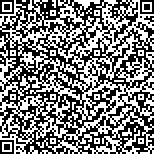下载中心
优秀审稿专家
优秀论文
相关链接
摘要

在对流单体检测中,相邻的对流云核很难区分。为了解决这个问题,基于红外和水汽通道卫星数据,提出一种新的检测对流单体方法。首先,针对卫星数据的特点进行数据处理,去除亮温大于241 K(对流系统的基准阈值)的像元,并将其归一化到[0,1]。其次,利用H极大值变换技术提取对流核种子点,设计一种八连通域准则使相邻种子点形成聚类并按顺序进行标记,有效地区分了相邻的种子簇。然后,设计一个新的准则判断相邻的种子簇是否需要合并。最后,根据多个阈值产生的种子点设计了种子簇累加合并方法使种子点生长或者与其他相邻的种子点合并,形成最终的对流核。选取红外和水汽通道的多通道数据开展验证实验,并和雷达资料和其他方法进行对比实验,结果表明该方法可以有效地区分相邻的对流单体,在初生、成熟和消散等中尺度对流系统生命周期均准确。此外,所提方法不仅对单个对流核有效,而且对多个对流核也能准确地检测。
Mesoscale Convective System (MCS) is the main reason of formation strong convective weather. Therefore, it is quite necessary for us to study the evolution and characteristic of MCS. Adjacent convective cells cannot be well distinguished is the main problem in convective cell detection. To address this issue, a new method is proposed based on H-maxima transform using infrared and water vapor channel data from FY-2F meteorological satellite.Firstly, Pixels with bright temperature greater than 241K (Baseline threshold of convection system) were removed and normalized to [0, 1]. Secondly, H-maxima transform technology was used to extract seed points of convective cells, and a new criterion for connected domain was designed to cluster adjacent seed points and mark them in order. Finally, a new merging method was developed to make the seed points grow or merge with adjacent seed points.Experimental results on satellite images from infrared channel and water vapor channel show that the proposed HTC method efficient and accurate, including initial, mature and dissipation stages of Mesoscale Convective Systems lifecycle. This study showed that the proposed method has a considerable application prospect for detecting convective cells in the field of meteorology. In addition, the proposed method is not only suitable for detecting single convective cells, but also capable of multiple convective cells detection.

